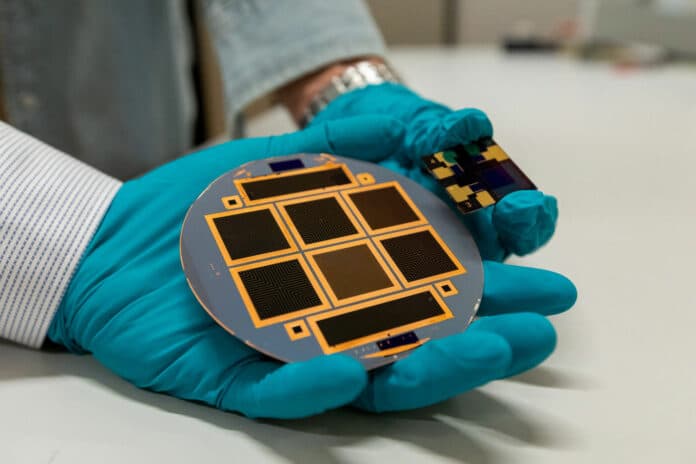Researchers from the Netherlands Organisation for Applied Scientific Research (TNO), the Delft University of Technology, the Eindhoven University of Technology, and the Belgian research institute Imec came together to further push the conversion efficiency of tandem solar cells beyond the limits of today’s commercial photovoltaic (PV) modules.
They have achieved an extraordinary feat; for the first time, four-terminal perovskite/silicon tandem devices with certified top cells broke the barrier of 30%. Such a high efficiency enables more power per square meter and less cost per kWh. The result has been achieved by combining the emerging perovskite solar cell with conventional silicon cell technologies.
The researchers were able to increase the cell’s overall efficiency by raising the efficiency of the perovskite cell – a highly near-infrared transparent perovskite device built by TNO with TU Eindhoven and Imec.
Researchers have successfully improved the efficiency of the semi-transparent perovskite cells up to 19.7% with an area of 3×3 square millimeters. “This type of solar cell features a highly transparent back contact that allows over 93% of the near-infrared light to reach the bottom device. This performance was achieved by optimizing all layers of the semi-transparent perovskite solar cells using advanced optical and electrical simulations as a guide for the experimental work in the lab,” says Dr. Mehrdad Najafi of TNO.
The team placed the perovskite device on top of a silicon heterojunction (SHJ) cell developed by TU Delft. “The silicon device is a 20×20-mm2 wide, heterojunction solar cell featuring optimized surface passivation, transparent conductive oxides, and Cu-plated front contacts for state-of-the-art carrier extraction,” says Yifeng Zhao, a Ph.D. student at TU Delft.
The silicon device optically stacked under the perovskite contributes 10.4% efficiency points to the total solar energy conversion. Together with the perovskite solar cell, the device delivered a combined energy conversion efficiency of 30.1%, making it the world’s best efficiency so far. In four-terminal (4T) tandem devices, the top and bottom cells operate independently of each other, which makes it possible to apply different bottom cells in this kind of device.
In addition, combining this highly transparent perovskite cell with other silicon-based technologies such as back contact and TOPCon solar cells has also delivered conversion efficiencies approaching 30%. This demonstrates the potential of highly transparent perovskite solar cells and their flexibility to be combined with already commercialized technologies.
Journal reference:
- Yifeng Zhao, Paul Procel, Arno Smets, Luana Mazzarella, Can Han, Guangtao Yang, Liqi Cao, Zhirong Yao, Arthur Weeber, Miro Zeman, and Olindo Isabella. Effects of (i)a-Si:H deposition temperature on high-efficiency silicon heterojunction solar cells. Progress in Photovoltaics, 2022; DOI: 10.1002/pip.3620
